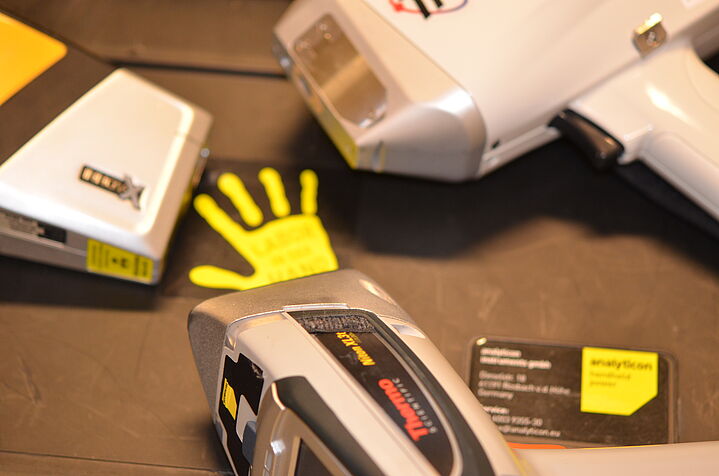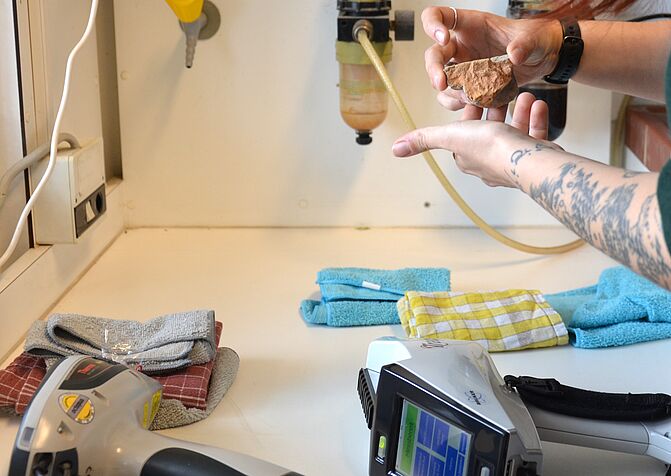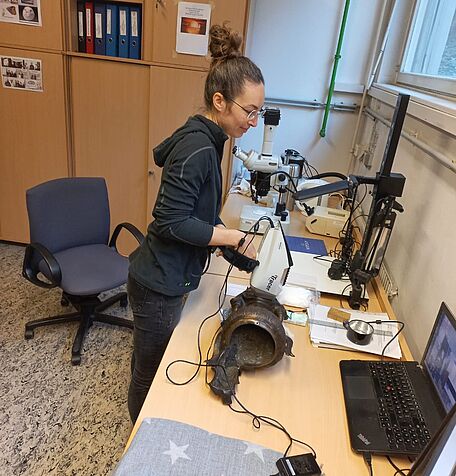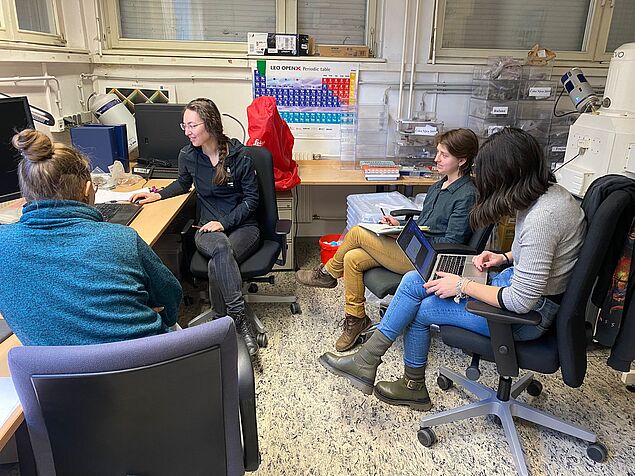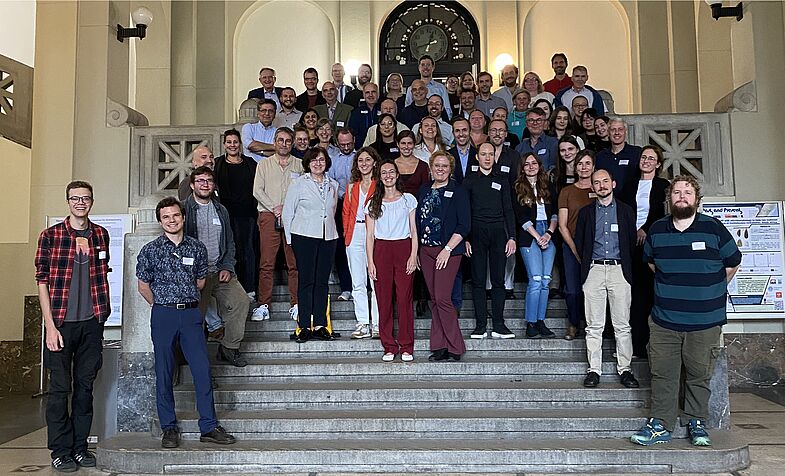Portable X-Ray Fluorescence Analysis
Portable X-ray fluorescence analysis (p-XRF) is used in a wide range of commercial and scientific applications. Applications range from the analysis of hazardous waste to the material composition of ancient artefacts to rocks and sediments on Mars. The method is therefore highly adaptable to the needs of the task in hand.
Equipped with its own X-ray tube, p-XRF defines the chemical fingerprint of the sample by identifying and quantifying the characteristic X-rays emitted by the sample. The elemental composition is given in real time - the results can be used on the spot. The main advantages of the methods are therefore
- Speed: Due to the short measurement time, a large number of samples can be analysed, providing not only an overview of the material, but also a statistically reliable data set.
- Ajustability: A variety of measurement modes are available to suit different materials and research questions.
- Flexibility: the instruments can be used wherever they are needed - in the laboratory, in the museum or in the field.
- Inclusiveness: P-XRF promotes collaboration between specialists and provides a sound basis for further research.
Facility and Services
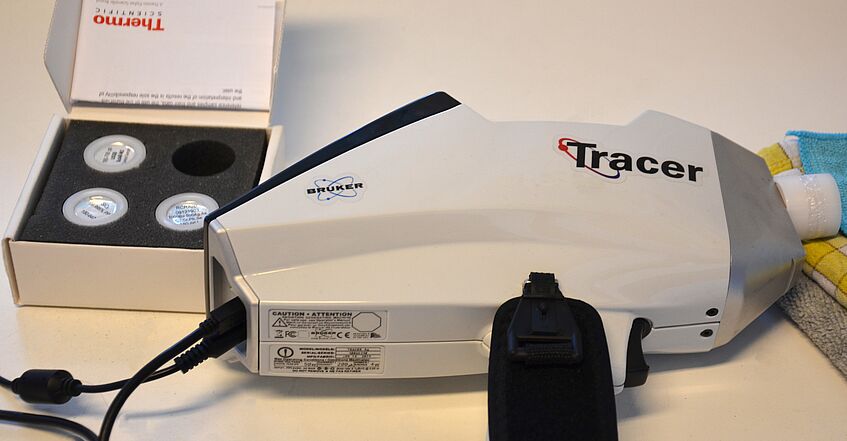
The Tracer 5g of VIAS
Facility and Services
The VIAS p-XRF laboratory is located at Franz-Klein-Gasse 1, 1190 Vienna. It houses a Bruker Tracer 5g with modes for silicate based materials such as clays and pottery, but also sediments, stones, glass and modern as well as ancient metals.
In the last years a variety of projects have been successfully carried out on works of art, metalwork, heritage objects and archaeological research on a wide range of materials. In addition, p-XRF training sessions and workshops are held several times a year.

